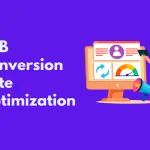Knowing how to work remotely sounds like a dream, doesn’t it?
You wake up when you want. You don’t have to sit in traffic every morning. You can create your own work hours. You can do work that brings you joy.
This is the reality for nearly 3.9 million remote workers.
Remote work frees you from the shackles of your desk and gives you the freedom to work when and where you want.
In the past, remote work might have been nothing but a pipe dream. But, today more and more people are turning to remote work, and a lot of startups and companies are becoming open to the idea of a remote workplace.
Even if you’re brand new to the concept of remote work, it’s entirely possible for you to attain.
By the end of this post, you’ll be fully equipped to start your new remote working career, whether you decide to work from home, the beaches of Bali, or a high-rise apartment in New York.
Table of Contents
Table of Contents
What is Work Remotely?
Remote work is a type of working that allows people to work outside of the traditional office setting. It’s built upon the concept that you don’t have to be in the same physical proximity to get work to get good work done.
Remote work is on the rise, in fact, there’s been some speculation that it’s the future of work.
There are even very successful startups that have been built with a remote work environment from day one.
For example, Basecamp, who created one of the most successful project management software in the world, has been operated remotely from day one.
It’s baked into their operating principles and every aspect of their business. Jason Fried and David Heinemeier Hansson, founders of Basecamp and author’s of Remote: Office Not Required have this to say about remote work,
“If working remotely is such a great idea, why isn’t everyone doing it? I think it’s because we’ve been bred on the idea that work happens from 9 to 5, in offices and cubicles. It’s no wonder that most who are employed inside that model haven’t considered other options, or resist the idea that it could be any different. But it can.”
Instead of having to deal with a long and tedious commute, only to be chained to a desk every day. Workers can get things done from the environments that suit them best.
This might be from a home office, a coworking space, a local coffee shop, even the couch!
There are a few different pathways to working remotely.
Here are the
- Getting hired for a fully remote position
- Working as a remote contractor or freelancer
- Transitioning your current job to remote
This post will briefly touch on freelancing as a means to get a fully remote position. But, the bulk of this post will focus on landing your first remote job.
How to Work Remotely
Getting a remote job isn’t any more difficult than getting a standard 9 to 5, the process is just different.
A lot of people get inspired by the thought of getting a remote job, but they start their search in the wrong places and end up getting burnt out.
Before we get into the nitty-gritty of getting a remote job there are three important skills:
- Looking for remote jobs in the right places
- Marketing yourself the right way
- Getting creative with your applications to “rise to the top”
Below we’ll dive into each of these areas in depth.
1. Find a Job on These Remote Job Boards
The most important point is probably that first point, looking for a remote job in the right places, such as on a recruitment website.
Here are the best sites for finding remote jobs:
FlexJobs
FlexJobs is one of the best places to find a remote gig. It’s a job board that’s dedicated to helping people find remote or flexible work gigs.

It’s free for companies to post, but to apply for a job, you’ll need to pay $14.99 per month. Even though it’s a premium job board, it’s a small investment to make in your new career.
There are all kinds of jobs available on this job board, and the cover nearly every industry out there. Plus, new jobs are added daily, so make sure to check back often for your remote dream job.
Pangian
Pangian is a very fast-growing remote job network. Their job board currently boasts thousands of different jobs from hundreds of different companies.

There’s both a free and premium version of the job board. The free version contains plenty of jobs, but the highest quality gigs are hidden behind a paywall.
Beyond the job board, there’s also a massive community of remote workers you can tap into to ask for advice, share new strategies, and more.

WeWorkRemotely
WeWorkRemotely is a job board that’s 100% dedicated to remote jobs. You can filter by industry and type of job offered. There’s a lot of programming and development jobs, but you’ll also find marketing, support, design, finance, and more.

Jobs are posted daily and the site is incredibly easy to use. Plus, there are a number of useful resources for remote workers as well.
AngelList
AngelList is a great platform for remote job seekers who want to work at a startup. The job board is entirely free and there are new job postings added daily.

On this platform, you create a profile with your relevant skills and browse job posting based on those requirements. You can even leave your profile open to interviews to have hiring managers and recruiters reach out to you. It’s not for everyone, but those who want to work at an early stage startup will enjoy this platform.
Hubstaff Talent
HubStaff Talent is a job board that offers a variety of different types of jobs. You’ll find full-time remote gigs, freelance jobs, and even one-off projects.

You’ll find all kinds of positions including, marketing, design, customer support, social media management, and a lot more. There are all kinds of filtering mechanisms available, so you can really drill down on the exact job you’re looking for.
Remote
Remote offers jobs from a wide range of different companies. You’ll find startup jobs, all the way up to fortune 500 companies.

When you create a profile on this site you’ll be matched with potential companies who are looking for someone with your skills. You can even see what the company is paying before you consider applying for a job.
This job board is worth checking consistently, as there are new jobs posted daily.
Jobspresso
Jobspresso is a massive job board that’s focused on remote job listings. You’ll find job listings from smaller startups, all the way up to some of the biggest companies in the world.

You can filter by specific industry, or browse the listings as a whole. You can even join their email list, so you’ll get notified about new job postings daily in your inbox.
There are all kinds of additional job boards out there, but the job boards above are the absolute best for finding remote jobs.
2. Building Your Remote Skills
For the sake of example, let’s assume that you’re brand new to this whole remote work thing. You don’t want to build a freelance business or transition an in-house position into a remote gig.
Your first step would be analyzing the job boards above to see if any type of job sparks your interest.
For example, we can look at this posting for a remote graphic and product designer role to see what type of skills it requires.

Ideally, you’d already have some existing skills or a portfolio that you can apply to the role. But, if not it’s time to get busy learning.
Luckily, there are a variety of education platforms you can use to learn new skills.
The following are great places to check out:
- Treehouse. This is an incredible resource for learning how to code.
- Code Academy. Another great resource for learning web development.
- Lynda. Here you can learn virtually any digital skill under the sun.
- Udemy. Another great resource that offers courses on virtually any topic (usually you can find courses here for 90% off).
- Skillshare. This platform offers a variety of courses taught by experts in their field.
The above resources are a great place to start, but landing a remote job will require more than just taking a course. You need to demonstrate your skills in the real world.
There are two great ways to do that:
1. Create a Side Project
A side project is a great way to demonstrate your new skills (and maybe even build a side business in the process.
For example, let’s say you want to become a remote graphic designer. You could start a blog that shares
Or, you could even create a logo a day and give them away for free. For example, Jennifer Dewalt did something similar where she created a website a day for 180 days to teach herself programming.
The goal of your side project could be to build a tangible business or to simply illustrate your skills and act as a living portfolio piece.
2. Do Some Freelance Projects
Freelancing is another great way to put your skills to work and gain practical experience before you apply for a full-time job.
You can either leverage your existing blog by adding a ‘Hire Me’ page. Or, you can actively seek out jobs by pitching on a variety of job boards.
Here are a few worth exploring specifically for freelance gigs:
- Fiverr. You can earn money with basic gigs and charge more for in-depth packages.
- SolidGigs. This is a premium job board that curates gigs for freelancers.
- ProBlogger Jobs. This is a free job board that has a variety of freelance blogging jobs you can apply for.
- Upwork. You create a profile and pitch jobs that you have relevant experience for.
3. Landing a Remote Job
The biggest challenge to finding a remote working job is knowing where to look and having the right skills. The steps above will take care of both of those.
Now, it’s time to begin your job search and start applying for jobs!
When you’re submitting your application, or moving forward to the interview stage it’s important to focus on soft skills. Since you’re looking to get hired for a remote position skills like communication, passion, and motivation is even more important. Most of your communication will be via tools like Slack, or telecommuting for meetings.
Your goal throughout your interview and application should be to convey how much passion you have for your role.
Remote vs Semi-Remote Teams
When you’re applying for remote jobs you’ll probably see the terms “remote-first”, “remote-only”, or “remote-ok” being thrown around.
Although these seem the same, they can be quite different in reality. Ideally, you’ll be hired with a company that has a solid track record of working with remote workers and has solid onboarding in place.
You don’t want to be the first employee that they’re testing the waters with.
Companies that are fully distributed and already have remote workers on staff will have procedures in place that’ll help you feel like part of the team, easily integrate into the workday, and meet your team members.
What Does it Mean to Work Remotely?
It’s time to dive into the realities of remote work. Although working remotely can be a great way to build a freedom-filled life, it’s not for everyone.
Here are some of the biggest pros and cons to working remotely:
The Pros of Remote Work
A lot of people switch over to remote work for the perks, flexible hours, and freedom is brings. Here are some of the biggest benefits to working remotely:
- No commute. If you used to dread your morning commute, you can say goodbye to this forever. No more rush hour traffic, early mornings, or bus rides. The longest commute you’ll make is to your local coffee shop, or home office.
- Set your own schedule. Depending on what your remote position entails, you have complete control of your time. This means you can build a work schedule that works for you, and go for hikes in the middle of the day.
- Work from anywhere. A lot of people choose remote work for the lifestyle it provides. You can work from wherever you’d like, as long as you have strong wi-fi. This could be from your home, a beach in Australia, a mountain getaway, or wherever your dream location might be.
- More time for family. Working full-time from an office can really put a damper on family time. Between commuting and work, you’ll have very little time leftover to actually spend time with your loved ones. With remote work you can work around your families schedule and create a work schedule that fits around your life.
- Save money. The amount of money you spend on gas, subway rides, and ubers can really add up. Same goes for eating out everyday when you’re at the office. Working remotely lets you cut down nearly all transportation costs and save money by making your own meals.
- Better productivity. Not everyone does their best work in an office setting. Remote work lets you create your own dream workspace. Plus, you cut out office drama and chatty coworkers from the equation.
- More time for yourself. Since you have more control over your time you can take the time to hit the gym on a daily basis, cook yourself healthy meals, and invest in your self-care.
- Time for learning and development. The world is changing and evolving at a rapid rate, to keep up you need to continuously be learning new skills. When you have control over your time it’s much easier to stay up to date by reading blogs, listening to podcasts, and taking online courses.
The Cons of Remote Work
Still, working remotely isn’t without its drawbacks. Here are some of the main downsides to doing remote work.
- Loneliness. Even for those who are very introverted, working from home can get lonely. Make sure you schedule time to see friends, or work from a cafe or coworking space. It’s a good idea to work at preventing loneliness before it strikes, by scheduling regular Zoom meetings with your coworkers, participating in group Slack chats, or even an old fashioned phone call.
- Risk of working too much. When you work from home, it can be hard to separate your work/home life and create a solid work-life balance. This can lead to overworking, and eventually burnout.
- Risk of poor productivity. You need to be a self-starter to successfully work from home. If you can’t get work done without being in the office, then remote work might not be for you.
Remote Work Success Stories
There are thousands of examples of successful remote workers. Whether they’re working in a freelance capacity, run their own business, or work full-time for a company in a remote capacity.
Here are a few examples to show you what’s possible:
1. Remote Online Business
The beauty of nearly all online businesses is that they can be run completely remotely. There are dozens of ways to monetize a website once you’re getting a decent volume of traffic.
From $11/hour to 7-figure Online Business
For example, Allen Walton was making $11 an hour working for a security camera store when he created his website–Spy Guy. He’s since grown his online business to 7 figures, mostly by himself, with the help of a single support hire.
$4.500 a month with a website in a boring niche.
Or, how about Heidi, who was able to create a $4500 a month website in the thank you note niche by monetizing her site via ad networks.
$150.000/year with Affiliate website
Or, even Tom Dupuis who was able to go from living at his parents house, to earning over $150k a year all from affiliate revenue, and living his dream life.
2. Remote Freelancer
The freelance lifestyle is a dream for a lot of remote workers. You work with a handful of consistent clients from wherever you desire.
Tom was able to quit his full-time engineering job and work from home as a freelancer, while making over $150 an hour.
3. Remote Worker
There are thousands of people who have thriving remote careers. For example, take Erin who was able to land a 100% remote position working as a Chief Marketing Officer for her dream company.
Or, Amber who found a 100% remote digital marketing role that allows her to work from home, live in a rural area, and take care of her family.
Both of these thriving remote workers found their dream jobs on FlexJobs (which we profiled above).
Is Remote Work Right for You?
You might still be wondering if remote work is right for you?
Although it’s an incredible way to earn a living–it might not be a great fit for certain kinds of people.
Before you start building your skills and applying for remote jobs it’s important to consider your personal work and lifestyle preferences.
For example, if you’re very extroverted and rely on your work colleagues as a big source of interaction, then you’ll need to find a way to account for this if you opt for remote work.
Another big thing to consider is the reasons you want to work remotely in the first place. For instance, if you already don’t like your job and you think that working remotely will fix things, it probably won’t.
If you have trouble staying focused while you’re in the office, then it’ll probably be near impossible for you to get work done when you’re not there.
To succeed as a remote worker you need to be self-motivated and care about your work. It’ll be completely on you to get your work done and hit deadlines.
But, if you’re a motivated person, are good with self-accountability and have a solid social network outside of work–then you might be perfect for a remote job
Best Places to Work Remotely
When you work remotely you’ll have near endless options to where you can get work done. Some popular choices include, a dedicated desk in your home, your local coffee shop, a coworking space, or even from Airbnbs all over the world.
Usually it’s a process of trial and error to find what works best for you.
For example, maybe you’ve always dreamed of working from home, but you just find there’s too many distractions, Netflix beckons your name, and there’s always something else you could be doing.
So, you find the perfect local coworking space that allows you to easily slip into productivity.
Or, maybe you want to get into working remotely, so you can see the world. In this case, renting various Airbnb’s all over the world might appeal to you.
If you’re sold on working remotely all over the world and becoming a digital nomad, then spend some time exploring Nomad List. This should be one of your go-to resources as a digital nomad.

This site will give you a breakdown of invaluable information for remote workers, like average rent costs, wi-fi speeds, a fun quotient, and much more.
Can I Work Remotely Part-Time?
Yes. There are a ton of jobs that allow you to work remotely part-time. Maybe you only want part-time work from home job, so you can take care of your kids?
Or, you love your job at the local brewery, but you want an online job that can supplement your income?
In some cases, companies will allow employees to work from home part-time, and from the office for the rest of the time. If you’re the type of person who wants to work remotely, but still enjoys aspects of the office culture, then this could be a great option for you.
One great part-time remote job to consider is becoming a Pinterest Virtual Assistant (VA). If you like social media, then this is a great remote gig that you can do part-time from the comfort of your own home.
Jobs to Work Remotely
There’s a wide range of remote jobs that you can do from anywhere in the world. For each of the jobs mentioned below, you’ll need nothing more than a laptop. Here are some of the top remote jobs out there today:
Jobs to Work Remotely From Home
Landing a job that lets you work remotely from home is a dream for millions of people. The following work from home jobs are flexible and can be easily run from your home office. Here are the top jobs to work remotely from home:
Best Companies to Work Remotely For
A big part of finding a remote job is knowing where to look. The job boards mentioned above are a great place to start. But, it’s also important to be aware of which companies actively hire remote employees. Here are some of the best companies to work remotely for:
- Dell
- Amazon
- Apple
- American Express
- Automattic
- GitHub
- Salesforce
- Intuit
- Appen
- Lionbridge
- Kaplan
- Buffer
- Jungle Scout
You can follow these companies on LinkedIn, Twitter, or join their email lists to be notified when a new job posting becomes available.
For an even longer list of remote companies make sure you explore these resources:
Final Thoughts: Starting Your New Life as a Remote Worker
By now you should be well versed in the remote work landscape.
You know what job boards to browse through, what kind of companies hire remote workers, and you’re building the necessary skills to become a stand-out applicant.
Landing a remote job might not happen after your first application, but if you stay persistent, you’ll be on your way towards your new location-independent dream job.








Leave a Reply